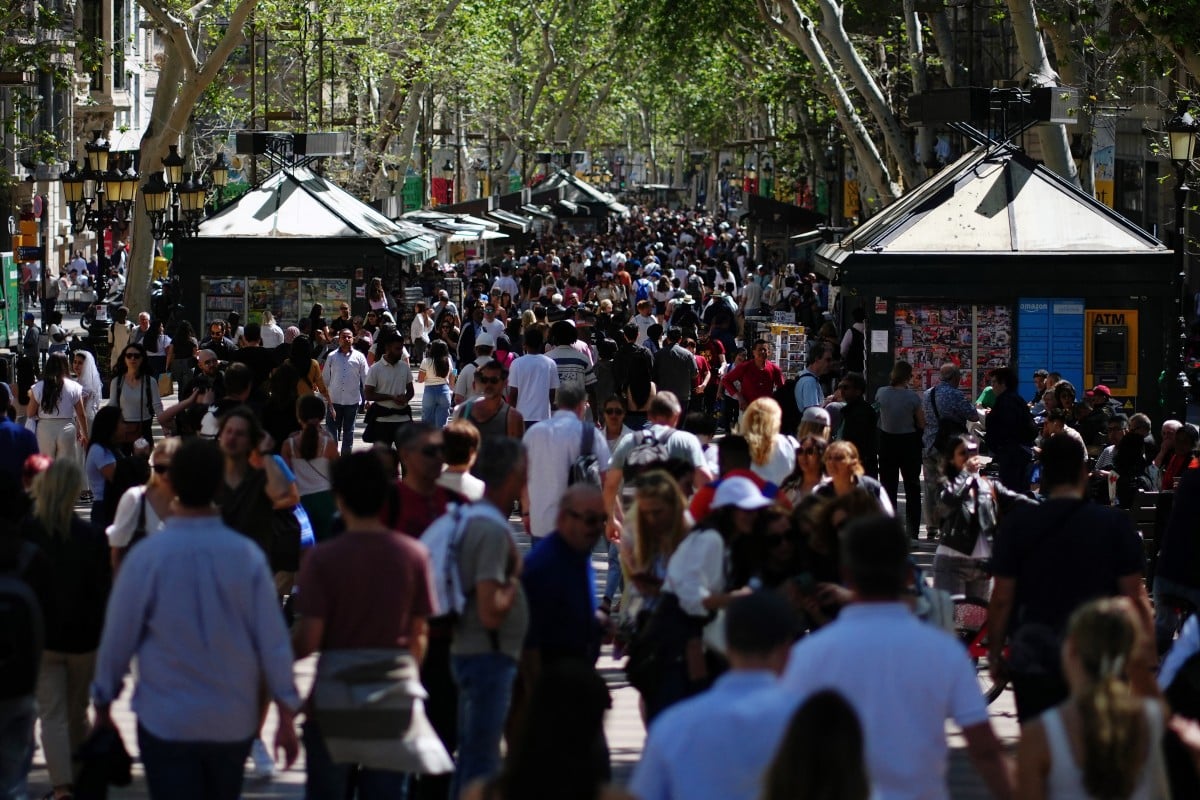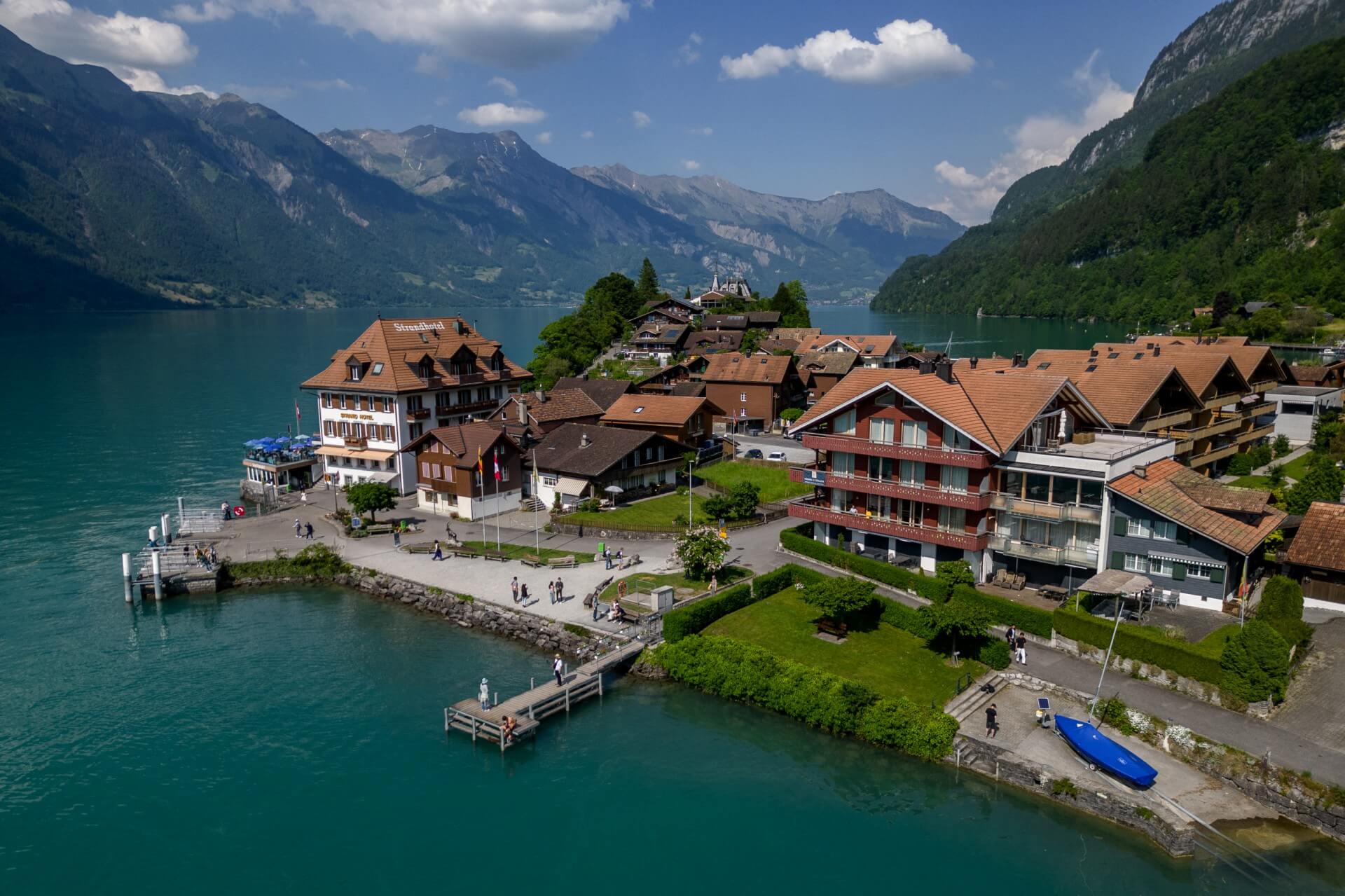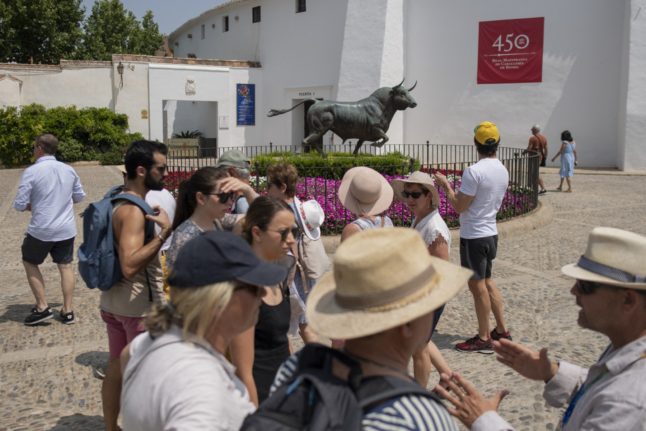On Thursday April 25th Venice introduced a new €5 tourist charge for day-trippers as the city battles against mass tourism. But it’s not the only part of Europe that appears to have had enough of tourists.
Cities, towns, picturesque villages, national parks and World Heritage sites across Europe are taking measures to prevent overtourism.
Those moves are not without controversy.
Barcelona
Nestled on the coast of the Mediterranean, Barcelona is the capital of the Catalonia region, home to famed Gaudi architectural gems and one of Spain’s top football clubs.
Ada Colau, the leftist former housing rights activist who was mayor of the city between 2015 and June 2023, cracked down on illegal Airbnb rentals that were accused of pricing locals out of the property market.
The city also limited the entrance of tour groups in the historic La Boquería market, especially during peak shopping times.
And throughout the centre organised groups must be limited to a maximum of 20 people and guides are not allowed to use loudspeakers.

In 2023 tourist numbers registering in hotels, homes and hostels were down 6.9 percent compared with 2019 figures, according to the City Council.
However, Barcelona hasn’t completely rid itself of the problems caused by mass tourism, nor have other popular spots in Spain such as Málaga and the Canary Islands, where the spike in Airbnb-style holiday lets causing a rental crisis and other consequences of overtourism have angered locals.
READ ALSO:
In Venice, one of the world’s top tourist destinations, 3.2 million visitors stayed overnight in the historic centre in 2022 — dwarfing the resident population of just 50,000.
On Thursday April 25th, it started charging day trippers for entry. Day visitors will have to buy a €5 ticket, monitored by inspectors carrying out spot checks at key points across the UNESCO world heritage site.

In 2021, it banned huge cruise ships from Venice lagoon over concerns about the environmental impact of the huge liners on the city.
Venice has also introduced a tax for overnight visitors.
Sites in France
France too is worried about over-tourism – or rather that fact that so many of the country’s millions of tourists per year visit just a few sites – Paris, Mont-Saint-Michel and the Calanques national park near Marseille.
A publicity campaign has been urging visitors to consider heading to other sites, or to visit out of the high season – this winter the Paris Metro was plastered with posters urging people to visit Mon-Saint-Michel in the winter, when it is less crowded.

There are more pro-active measures too, with several sites introducing a cap on visitor numbers. The Calanques, the islands of Bréhat and Porquerolles and several sites on the island of Corsica have all introduced annual quotes for tourists during the summer season, and all visits must now be booked in advance.
Other sites don’t have a formal quota but some are only open to pre-booked visitors, while for other popular sites it’s simply a book idea to book in advance to avoid being turned away. Anyone considering a visit to a tourist hotspot such as the Eiffel Tower, Louvre museum or Versailles palace during the summer is strongly advised to reserve their tickets in advance.
READ ALSO What places in France do I need to book a visit in advance?
Amsterdam
Amsterdam has long been trying to clean up a reputation for rowdy stag parties, drugs and sex that has been partly blamed on an influx of around 20 million visitors a year.
In 2023 it launched an online campaign aimed at discouraging young British men from travelling to Amsterdam to get high or very drunk, telling them in typically blunt Dutch fashion to “stay away” or risk arrest.
Amsterdam also announced last week a ban on new hotels and that it would halve the number of river cruise ships in the city within five years.
It also decided last year to ban smoking cannabis on the streets of the red-light district.
Hallstatt and Salzburg in Austria
The tiny village of Hallstatt, a hamlet just 750 people strong not far from Salzburg and bearing a striking resemblance to the fictional kingdom of Arendelle from Disney’s Frozen – last year caused furore when its residents erected a fence at its famous vista to deter selfie-seekers. After a social media backlash, the village – which is also a UNESCO heritage site – removed the fence, but signs remind visitors to enjoy the site quietly.
Residents were also protesting in favour of tourism curbs in the village, which gets as many as 10,000 visitors a day in high season. They want to limit the numbers and ban tour buses in the town after 5:00 p.m.
Not far from Hallstatt, the city made famous by classical music, Hollywood classics and Christmas songs, Salzburg, has also complained about massive tourism and the danger of being “overrun by mass tourists and day trippers”.
The city’s tourism boss Christine Schönhuber said: “We only want those who stay overnight”. The western Austrian city is yet to take any concrete measures, but it has floated ideas such as closing some streets to cars and putting restrictions on souvenir shops. The city is also considering closing the bus terminal at the city’s Mirabellplatz to day tripping companies – allowing only those transporting overnight guests.
Iseltwald, Switzerland
The quaint Swiss village of Iseltwald has been forced to limit the number of tourists after fans of a South Korean Netflix hit show flocked to the region in droves sparking a backlash from locals.
Iseltwald is often referred to as the pearl of Lake Brienz, and rightfully so. The fishing village is located on the left bank of the river and is one of the smallest communities in the canton of Bern – and locals would like to keep it that way.

Dubrovnik
Croatia’s medieval walled city of Dubrovnik is one of Europe’s most overcrowded cities, with the flow of tourists sometimes making it impossible to walk inside the historic Old Town.
The jewel of the Adriatic has seen a huge surge in visitor numbers since scenes from the series “Game of Thrones” were filmed on its ramparts in 2011.
In 2023, the town of 41,000 people received 1.2 million tourists, below 2019’s record of 1.4 million.
In 2019 local authorities limited the number of cruise ship arrivals to two per day, with no more than 4,000 passengers each at a time.
They also launched an app that uses machine learning and weather forecasts to predict when the Old Town, a UNESCO world heritage site, will be busiest.



 Please whitelist us to continue reading.
Please whitelist us to continue reading.
The massive crowds at The Louvre all the time make it all but impossible to enjoy in a civilized, relaxed way. Now they offer yoga classes in some galleries as a way to look hip before the Olympics. Most who go to great museums are just there for the selfie and Insta-photo. Museums allow way too many people in all the time in order to “stay afloat”; ruining the experience for real art lovers.